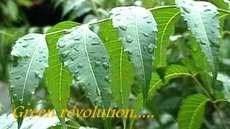 |
| NASA/JPL/JHUAPL/Public Domain |
Protecting the Earth
As I've said many times in the past: Even if the risk of Earth being hit by a big asteroid (known in the business as a Near Earth Object, or NEO) in the near future is relatively small, such an impact could be so devastating that it's worth doing our best to make sure it doesn't happen. There's no point in protecting our planet's environment if at some point most life gets wiped out by a potentially preventable global catastrophic risk. NASA has already been tracking most NEOs with its wide angle Wise telescope and found about 19,500 of them in the 100-1,000m size range. But tracking them is not enough; we must also known exactly what to do if we detect a potential collision trajectory. When there are potentially millions or billions of lives on the line, deciding on the best course of action must be done very deliberately and with the best science available. |
| NASA/Public Domain |
NEOShield
The NEOShield project is an international effort led from the German space agency's (DLR) Institute of Planetary Research in Berlin, with help from scientists across Europe, Russia and the US. The 3 methods that are currently believed to be best for dealing with NEOs are:Kinetic impactor: This mission might look like Nasa's Deep Impact mission of 2005, or the Don Quijote mission that Europe designed but never launched. It involves perhaps a shepherding spacecraft releasing an impactor to strike the big rock or comet. This gentle nudge, depending when and how it's done, could change the velocity of the rock ever so slightly to make it arrive "at the crossroads" sufficiently early or late to miss Earth.Different methods might work best with different types of asteroids, so determining what needs to be known about the target will be crucial.
"The amount of debris, or ejecta, produced in the impact would affect the momentum of the NEO," says Prof Harris.
"Of course, that will depend on what sort of asteroid it is - its physical characteristics. What's its surface like; how porous or dense it is? This is really something you would want to test with a demonstration mission."
"Gravity tractor": This involves positioning a spacecraft close to a target object and using long-lived ion thrusters to maintain the separation between the two. Because of gravitational attraction between the spacecraft and the NEO, it is possible to pull the asteroid or comet off its trajectory. "It's like using gravity as a tow-rope," says Prof Harris. "It's not straightforward of course. Can you be sure those thrusters will keep working for the time they're needed - a decade or more? Do you have confidence that the spacecraft can look after itself autonomously all that time? These are the sorts of technical problems we will look at."
In both scenarios, the effects are small, but if initiated years - even decades - in advance should prove effective enough.
What we've learnt about asteroids, however, is that they are not all the same. Different rocks are likely to need different approaches.
One method often discussed but about which there is great uncertainty is "blast deflection" - the idea that you would detonate a nuclear device close to, or on the surface of (even buried under the surface), an incoming rock. (source)
If you are interested in learning more about global catastrophic risks, there's an excellent book that covers a wide number of them in great details. You can get it here: http://www.global-catastrophic-risks.com/ (or straight from Amazon).
Via NEOShield, BBC
See also: Near Earth Objects and Asteroids: Are We Whistling in the Dark?




















